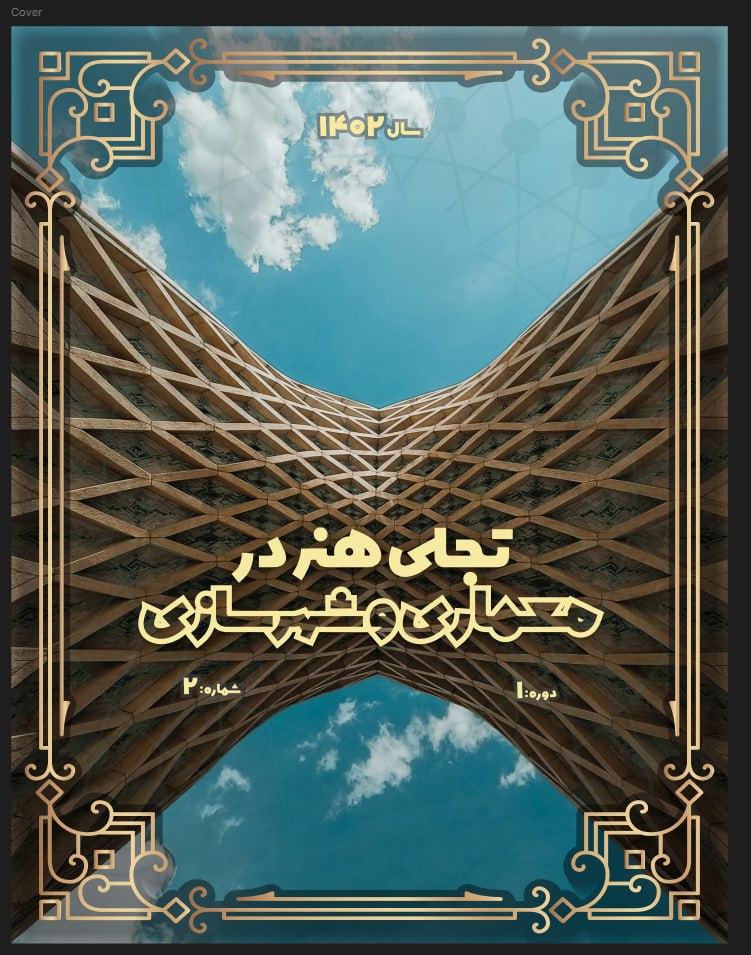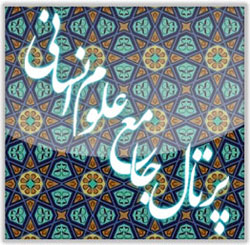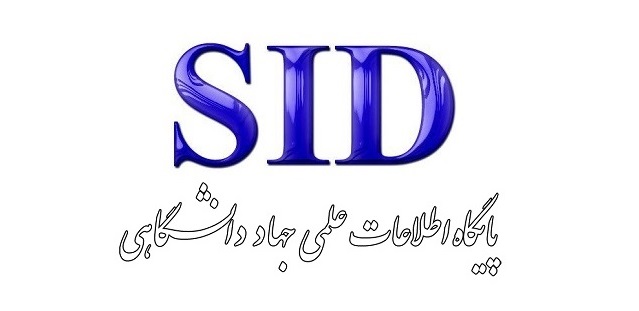خوانش نگارههای آثار معماری هخامنشی بر پایه نظریه کهنالگوی یونگ
کلمات کلیدی:
معماری هخامنشی, ناخودآگاه جمعی, کهنالگو, یونگچکیده
معماری بخش برجستهای از تاریخ هنر ایران میباشد که همواره مورد توجه بوده و شاهکارهای ارزشمندی از این هنر به جای مانده است. معماری هخامنشی از درخشانترین دورههای معماری سرزمین ایران است. این معماری با نگارههای ارزشمندی آذین یافته است که تامل بر این نگارهها درک عمیقتر از روح هنر و معماری آن عصر را میسر میسازد. به نظر میرسد نقوش و نگارهها در معماری این دوره علاوه بر تظاهرات بیرونی حاوی مفاهیم و معانی عمیقتری باشند که با روح و روان انسان پیوند دیرینه دارند. پژوهش حاضر با هدف رمزگشایی از نقوش و با رویکردی روانکاوانه و براساس دیدگاههای روانشناس سوئیسی كارل گوستاو یونگ به تحلیل نگارههای معماری هخامنشی پرداخته است. به عقیده یونگ روان از سه سطح تشکیل یافته است که عمیقترین سطح روان انسان ناخودآگاه جمعی نام دارد. یونگ محتویات ناخودآگاه جمعی را کهنالگو نامیده که بهشکل نماد در آثار ادبی و هنری انعکاس یافته است. یونگ مطالعات و تحقیقات فراوانی پیرامون نمادها انجام داد و معتقد بود كه هر چیزی در دنیا میتواند معنای نمادین پیدا کند. تحقیق پیشرو در پی تطبیق نظریه یونگ پیرامون بروز کهنالگوها در قالب نمادها در نگارههای معماری عصر هخامنشیان میباشد و سعی در پاسخ به این سوال دارد که تاثیر ناخودآگاه جمعی در نگارههای معماری هخامنشی به چه صورت قابل تبیین است و کهنالگوها در این آثار چگونه بازتاب یافتهاند؟ روش پژوهش حاضر تحلیلی تطبیقی بوده و دادههای پژوهش ماهیتی کیفی دارند که از اسناد و منابع کتابخانهای حاصل گشته است. یافتههای پژوهش گویای آن است که نگارههای معماری هخامنشی ورای جنبه تزئینی، حاوی معانی نمادین بوده و ریشه در کهنالگوها و خاطرات ناخودآگاه جمعی دارد. این نمادها در قالب نقوش حیوانات، گیاهان، اعداد و اشکال مقدس بهصورت تجریدی و ترکیبی در معماری بازتاب یافتهاند.
دانلودها
مراجع
1. Āfarīn F. Studying Intertextual Relationship in Shared Artistic Traditions and Motifs of the Elamite and Achaemenid Civilizations. Comparative Art Studies. 2018;8(15):117-33.
2. Ṭāherī S. Political Semiotics of Achaemenid Architecture. Visual and Applied Arts Journal. 2019;12(24):65-84.
3. Zandī Muḥibb Ā. An Analysis of Archetypal Symbols and the Creative Force of the Collective Unconscious in Passageways. Asar Journal. 2021;42(3):282-307.
4. Ṣarrāfzādeh R, Zand M. Interpretation of Manichaean Engravings Based on Jung's Archetype Theory. Dramatic Literature and Visual Arts. 2016;1(4):33-44.
5. Barrie TH. The Sacred In-Between: The Mediating Roles of Architecture. London: Routledge; 2010.
6. Heravī H, Falāmaki MM, Ṭāhā'ī SA. Reflection of the Mother Archetype in Iran's Historical Architecture Based on Jungian Views. Bagh-e Nazar Journal. 2019;16(75):5-14.
7. Pourmokhtār S, Pakdel Fard MR, Sattāri Sārbānqolī H. Rereading the Archetypal Indicators of Qajar Houses Architecture in the Nobar Neighborhood of Tabriz. Bagh-e Nazar Journal. 2023;20(119):23-38.
8. Parvīzī E, Ardastānī ZS. Rereading the Architecture of the Sheikh Safi al-Din Ardabili Complex in Relation to Archetypes. Mysticism Research Journal. 2024;15(30):25-45.
9. Ker Porter R. Travels in Georgia, Persia, Armenia, ancient Babylonia, &c. during the years 1817, 1818, 1819, and 1820. London: Longman, Hurst, Rees, Orme and Brown; 1882.
10. Ussher J. A Journey from London to Persepolis; including wanderings in Daghestan, Georgia, Armenia, Kurdistan, Mesopotamia, and Persia. London: Hurst and Blackett; 1865.
11. Briant P. From Cyrus to Alexander: A History of the Persian Empire. Warsaw: Eisenbrauns; 2002.
12. Moḥammadīfar Y, Mīrṣafdarī S. Stylistic Analysis of Achaemenid Architecture. Iranian-Islamic City Studies. 2014(16):19-28.
13. Palmer M. Freud, Jung, and Religion. Translated by M. Dehghānpour and Gh. R. Mahmūdi. 2nd ed. Tehran: Roshd; 2009.
14. Sha'bānī Ja'farūdī M, Ṣalavātiyān SM, Nīkū'ī A, Asadī Majarreh S. Reflection of Jungian Anima and Animus Archetypes in Traditional Houses of the Central Iranian Plateau. Woman in Culture and Art. 2020;12(2):219-49.
15. Jung CG. Man and His Symbols. Translated by M. Soltaniyeh. 2nd ed. Tehran: Jami; 2007.
16. Jung CG. Spirit and Life. Translated by L. Sedqiyāni. 12th ed. Tehran: Jami; 2023.
17. Maḥmūdī M, Sūdayī B. A Comparative Study of the Woman Motif in Mesopotamian Art and Luristan Finials Based on Jung's Archetype. Negareh. 2023(67):229-43.
18. Ṣāremī S, Nūrī A. The Reflection of the Cult of Mithras in the Futuwwa (Chivalry) School. Literary Criticism and Rhetoric Research Journal. 2012;1(2):1-20.
19. Qoreyshī Kryn SH, Estahri H. The Ahl-e Haqq (People of Truth) Ritual and Its Relationship with Mithraism. Shi'a Studies. 2019;5(16):173-96.
20. Hinnells J. Persian Mythology. Translated by Z. Āmūzegār and A. Tafazoli ed. Tehran: Cheshmeh; 2007.
21. Vermaseren M. The Cult of Mithras. Translated by B. Nāderzādeh. 3rd ed. Tehran: Cheshmeh; 2001.
22. Shāhvardī P, editor Jungian Analysis of Symbols in Achaemenid Architecture. 3rd International Conference on Research in Civil Engineering, Architecture, and Urban Planning and Sustainable Environment; 2016; Rome, Italy.
23. Eftekhārzādeh MR. Iran: Ritual and Culture. Tehran: Resālat-e Ghalam; 1998.
24. Kiyānī M. The History of Khanqahs in Iran. Tehran: Ṭahūrī; 1990.
25. Rażī H. Zoroaster, Prophet of Ancient Iran. Tehran: Behjat Publications; 2004.
26. Dādvar A, Barāzandeh Hosseinī M. A Comparative Study of Zoroastrian Fire Temples and Buddhist Stupas. Naqš Māyeh (Motif). 2010;3(6):7-20.
27. Akhavān Aghdam N. Praising Life as a Zoroastrian Belief Depicted on Sasanian Metal Vessels. Kimia-ye Honar (Alchemy of Art). 2012;1(2):15-30.
28. Ghafūrī A, Aḥmadī M. Investigating the Cypress from the Viewpoint of Form and Content with an Intertextual Semiotics Approach. Asar Journal. 2022;43(2):242-60.
29. Ṣādeghī S, Javānmardzādeh A, Khosravī Z. Iconography and Interpretation of the Eagle Engraving in the Achaemenid Era. Asar Journal. 2021;42(3):260-80.
30. Zawghī S. Investigating the Element of Fire in Ancient Iran and the Manner of Its Reflection in Rumi's Thought. Exegesis and Analysis of Persian Language and Literature Texts (Dehkhoda). 2022;14(54):342-65.
31. Atash Abparvar H, Yousef Jamali MK, Sangari E, Ārābī Hāshemī SS. Explaining and Analyzing the Role of Sacred Numbers in the Creation of Waters in Ancient Iran (Case Study: Numbers Three and Seven). Iranian Studies Research. 2023;13(3):81-97.
32. Salhšūr M. An Inquiry into the Greatest Goddess of Ancient Iran. Anāhīd. 2005(9).
33. Dārīūsh B, Asgard Ā, Manṣūrī SA. Chārtāqī: The Continuity of the Sacredness of the Mountain in Iranian Rituals, Architecture, and Landscape. Manẓar (Landscape). 2020;12(53):64-73.
34. Chālāk S. Sun Worshippers. Anāhīd. 2005(9).
35. Hosseīnī ZS, Sa'īdī MR, Chāychī Amīrkhīz A. Authenticity Assessment of the Silver Rhyton Ending in a Lioness Head Attributed to the Achaemenid Period in the Hamedan Museum Based on Comparative Study. Asar Journal. 2022;43(3):574-90.
36. Belkhāri Qahī H. The Hidden Secrets of a Flower. Tehran: Hasan Afrā Publishing; 2005.
37. Ghā'em Maqāmī J. The Lion and Its Role in Aryan Beliefs. Historical Studies. 1966;1(3):91-141.
38. Nowrūz 'Alī Z, Khiyālī Khaṭībī A, Ḥalabī AA. Symbolism of Animals in Sa'ādatnāmeh and Sāqīnāmeh with Emphasis on Jung's Archetype. Persian Language and Literature of Shifā-ye Del. 2021;4(7):177-97.
39. Sharīfiyān F, Fikrīpūr K. Symbolism of the Bull Engraving on Sasanian Seals (With the Introduction of Three Seals from the Bu-Ali Hamedan Museum). Asar Journal. 2022;43(4):756-68.
40. Yāḥaqqī MJ. Dictionary of Myths and Story-Motifs in Persian Literature. Tehran: Farhang-e Moaser; 2009.
41. Cooper J. An Illustrated Dictionary of Traditional Symbols. Translated by M. Karbāsiyān ed. Tehran: Farshad; 2000.
42. Hātam G. Role and Symbol in the Ancient Pottery of Iran. Honar (Art) Quarterly. 1995(47):355-78.
43. Hall J. Dictionary of Subjects and Symbols in Art. Translated by R. Behzādī ed. Tehran: Farhang-e Moaser Publications; 2009.
44. Rostam Beygi S. Shared Symbols Between the Cult of Mithras and Christianity. Shabak. 2021;7(4):47-58.
45. Hosseīnī M. The Rooster and Its Role in Seven Painting Works. Kimia-ye Honar (Alchemy of Art). 2012;1(2):7-14.
46. Kāmelī S, Amīnpūr A. A Study of Symbolic Sun Engravings in Mihrabs and Mihrab-Shaped Tombstones of the 4th to 7th Centuries AH. Comparative Art Studies. 2017;7(13):63-77.
47. Mīrzā'ī Mehr A. A Comparative Study of Sasanian and Qajar Reliefs. Comparative Art Studies. 2018;8(15):71-83.
دانلود
چاپ شده
ارسال
بازنگری
پذیرش
شماره
نوع مقاله
مجوز
حق نشر 2025 پریسا شاه وردی (نویسنده)

این پروژه تحت مجوز بین المللی Creative Commons Attribution-NonCommercial 4.0 می باشد.









